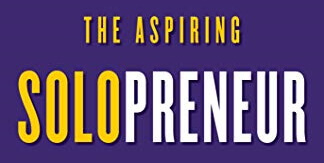One of the key ingredients that makes companies successful is a willingness to be open and honest with each other. Understanding and creating this sort of environment needs to be one of the primary objectives of the senior leaders.
The most important thing is to have an environment where people can have a disagreement. Engaging in conflict (but for the right reasons!) is absolutely critical. When people do engage in conflict for the good of the organization, it needs to be healthy, open, and honest.
It all starts with intention. When you get to a point where you have conflict with someone in your office and you need to have critical conversations, these begin with your intention. Conflict can often come from miscommunication. More than anything, it comes from misunderstanding.
- The first step to engage in healthy conflict is to calm down. Take a breath, and embrace that engaging in conflict is okay. The first step is to try to understand why the disagreement is happening. If you can come into the discussion with a desire to of understand, rather than to be right or defending yourself, it will help keep the conversation open. I would encourage you to earnestly attempt to do this.
- If this means that when they’re done talking, you count to three in your head or consciously take a breath so that there’s space that allows you time to contemplate what they’ve said, fine. You will want to avoid a quick response. If you say something and I start talking as soon as you’re done, it makes it seem as if I’m not listening to you and even come across as dismissive. You have to start with the overall intention of truly wanting to understand what the other person’s perspective is. That doesn’t mean you’re going to agree with it. But if you go in with an open mind and open approach, maybe you can help understand the why.
- After the other person has explained their point of view, parrot this back to them, tell them what you heard in order to make sure that you’re both on the same page. Say, “If I understand you correctly, you’re saying these things?” It will also give you a few extra moments to process a response.
- Ask yourself, “Does this person have a legitimate point?” Sometimes, people want the same thing, but one person is speaking Mandarin and the other is speaking Hindi. They don’t understand why they don’t agree. So, they just speak louder and louder by saying the same thing. Maybe you’re just using different words than the other person is, but you want the same outcome. If their point-of-view is completely different than your perspective, fair enough. You’ve at least heard that person, allowed them to verbalize it, and shown the courtesy to try and understand where they’re coming from.
- Then, ask, “Can I express where I’m coming from and how I’m thinking? And based on that, how can we come up with a solution?” Now, you’ve given a good example by asking for them to listen and showing that you are willing to do the same.
As human beings, we have a need to be heard, if we aren’t heard, we get angry. On the other hand, if I listen to someone else’s perspective and they genuinely listen to mine, I may not understand or agree with them, but I know where they’re going. When that happens, the likelihood of success goes up exponentially.
How can we create these versions of healthy conflicts in our own workplaces? We don’t know what we don’t know. We aren’t always good at listening to others. Healthy conflict happens when we take the time to really, honestly, listen and learn from other perspectives, and then come to a conclusion.
If you need help or support creating an environment for healthy conflict in your own workplace, let me know. I am happy to help, anytime!






